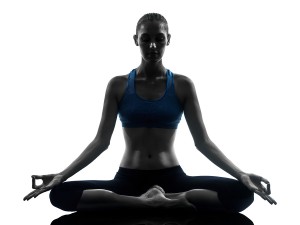
As more research uncovers the practical, concrete benefits – everything from decreased stress and depression to increased immunity and anti-ageing – mental health experts, teachers, even the NHS, are finding the pay-offs of being ‘in the moment’ are available to the rest of us with far less time investment and no religious conversion.
Here are some of the latest in ‘non-mystical’ meditation options:
Mindfulness ‘The only goal with mindfulness is to become more aware,’ says psychologist and meditation teacher Susann Hermann who runs Mindfulness Based Cognitive Therapy courses for the Camden Mental Health Consortium. ‘There’s no goal such as feeling happier, more relaxed, the idea is just to notice the present moment, and that takes the pressure off. The ideal is 20 minutes a day, but if you can’t manage that, just two or three minutes, when you find the time, is also a big help.’ The result of course, is that over time you will be happier, calmer and more relaxed. It’s great for mild to moderate depression, anxiety and social phobia as well as general stress. Talk to your doc as courses are now available on the NHS or try mental health charity Mind who run courses around the country.
Moment Pioneered by teacher and corporate consultant Martin Boroson, author of The One-Moment Master: Stillness for people on the go (£6.99 Random House) these exercises require no more than one minute to complete, they’re deceptively simple but their results powerful. Most involve simply sitting and noticing your breath or observing something in your field of vision – for the shortest time. Though deceptively simple, they’re surprisingly refreshing done in the middle of a nightmare day. It takes less than a minute, it seems to notice one’s shoulders around one’s ears and jaw clenched and just as long to let it go. ‘Everyone has at least one free minute a day’ he says, so everyone has time for this. ‘And with practice, you can do them in even less time, until you can do them in just a moment.’ After regular daily ‘moment meditation’, practitioners tend to notice the many ‘gap moments’ between the seemingly back-to-back demands of life, and see them as opportunities, he says. ‘Do you really need to check that blackberry again, or could you enjoy a few seconds of peace?’
Flow Psychologists are now discovering something that can help people who couldn’t meditate traditionally find calm – simply by focussing on doing something they enjoy, be that gardening, pottery, cooking or dancing around the house to Don’t Want To Be An American Idiot turned up to 11.
Movement Whether it’s through yoga ‘asanas’ or sports such as running, swimming or cycling, focusing on exercise – it could be as simple as walking – moving has long been a part of meditative traditions. The key, says Sri Chinmoy, who teaches sports meditations, is the same as with other meditation – breath evenly, focus your attention on your bodily sensations, open your senses to your surroundings, and practice regularly.
Like this article? Sign up to our newsletter to get more articles like this delivered straight to your inbox.




















































